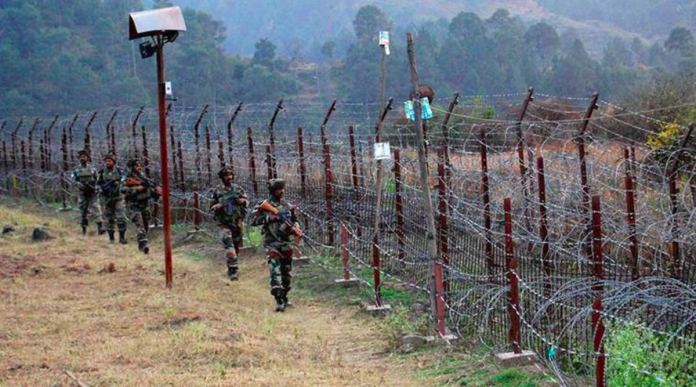For the last few years, along with usurping its neighbours’ territories, starting with Doklam and followed by the Galwan crisis, China has escalated armed activities resulting in enhanced cross-border infiltration and armed intrusions. Similarly, the continued Pakistan-backed infiltration of terrorists poses fresh challenges to India.
Two recent developments initiated by China have made our borders more vulnerable. China’s Land Border Law (LBL) will enhance Beijing’s aggressive posture and is aimed at resolving border disputes on its terms. Equally alarming is the move to build 628 “Xiaokang model border defence villages” along the 3,488 km Line of Actual Control (LAC), which is conceived as a tactic to consolidate Chinese claims over disputed areas and garner local support.
Additionally, these villages are capable of acting as forward assembly and administrative areas during hostilities. Two villages have already come up in the disputed area across Arunachal Pradesh. These developments warrant a comprehensive review of border management to ensure the all-weather security of our borders.
India shares land borders with Pakistan, China, Nepal, Bhutan, Bangladesh and Myanmar, which stretch approximately 15,106 km. In addition, we have an approximately 3,323 km-long LoC with Pakistan, which further extends to the rechristened 110 km stretch of “Actual Ground Position Line” (AGPL) dividing the Siachen glacier region.
Further east, we have the 3,488 km LAC with China. We share maritime boundaries with Sri Lanka, Maldives, Bangladesh, Pakistan, Myanmar and Indonesia; we have a 7,683 km coastline and an approximately 2 million sq km exclusive economic zone (EEZ).
This makes India’s task more complex than most other countries. This complexity is accentuated by the fact that along with the army, we have multiple other security agencies — the Central Armed Police Force (CAPF) and the Paramilitary Forces (PMF) — sharing the responsibility.
While the army is deployed along the LoC and AGPL, the Border Security Force (BSF) looks after the international border with Pakistan and Bangladesh. Guarding the LAC has been assigned to the Indo-Tibetan Border Police (ITBP) and Assam Rifles. The Sashastra Seema Bal (SSB) is responsible for guarding the borders with Nepal and Bhutan.
The Assam Rifles looks after our border with Myanmar. In a nutshell, in addition to the army, we have four agencies guarding borders with six neighbours. Conversely, maritime borders are guarded by a single agency — the Coast Guard.
Most countries have raised specialised and dedicated armed bodies for border security. For example, Iran has the Border Guard Command, Italy has the Border Police Service, Russia has created a Border Guard Service, whereas in the US, it is under Homeland Security.
Closer home, in China, it is the People’s Armed Police, while Pakistan has a Frontier Corps for its western border and the Rangers looking after the Indo-Pak Border. Most of these countries, based on threat perception and for better combat cohesion, have placed these organisations under the command of the armed forces.
In India, we have unwieldy arrangements. As a result, there is a lack of a coherent policy on training, planning and the conduct of guarding operations among various outfits. Overall coordination is also affected. Going by the instances along the western border, our adversary has often escalated violations by resorting to the prolonged use of military resources.
Similarly, their modus operandi has also undergone a qualitative change whereby they have buttressed border security by co-opting military battle drills and sub-unit tactics such as sniping, launching raids and ambushes on the Loc/international border by deploying regular troops. Chinese provocations along the LAC are military operations. Clearly, the peace-time scenario is now by and large militarised.
In this scenario, India needs a single security agency adequately equipped, suitably armed and trained in advanced military drills and sub-unit tactics to guard our borders. The manpower and infrastructure should be created by pooling and merging the resources of the CAPF and Assam Rifles.
Further, to augment the battle efficiency, a fixed percentage of manpower, including the officer cadre, should be drawn on deputation from the army. The proposed outfit, let’s call it the National Border Guard, (NBG), should have the explicit mandate to effectively retaliate against cross-border transgressions and stabilise the situation till the operations are taken over by the armed forces.
To ensure the desired training and operational standards, the NBG should be designated as a paramilitary force under the Ministry of Defence and operate under the army. Finally, a collateral spin-off — an opportunity to prune the bulky CAPF into a cohesive, lean and efficient force.
The ITBP and the SSB should be fully merged into the new outfit; the BSF and CRPF still have important internal security duties and can be partially merged. The reorganised Assam Rifles too should retain its role of conducting counter-insurgency operations and act as a reserve for the army for conventional operations.















